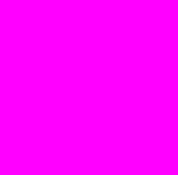# Context
I wanted to add a `texture` to my `ColorMaterial` without explicitly adding a `color`. To do this I used `..Default::default()` which in turn gave me unexpected results. I was expecting that my texture would render without any color modifications, but to my surprise it got rendered in a purple tint (`Color::rgb(1.0, 0.0, 1.0)`). To fix this I had to explicitly define the `color` using `color: Color::WHITE`.
## What I wanted to use
```rust
commands
.spawn_bundle(MaterialMesh2dBundle {
mesh: mesh_handle.clone().into(),
transform: Transform::default().with_scale(Vec3::splat(8.)),
material: materials.add(ColorMaterial {
texture: Some(texture_handle.clone()),
..Default::default() // here
}),
..Default::default()
})
```

## What I had to use instead
```rust
commands
.spawn_bundle(MaterialMesh2dBundle {
mesh: mesh_handle.clone().into(),
transform: Transform::default().with_scale(Vec3::splat(8.)),
material: materials.add(ColorMaterial {
texture: Some(texture_handle.clone()),
color: Color::WHITE, // here
}),
..Default::default()
})
```

Adds "hot reloading" of internal assets, which is normally not possible because they are loaded using `include_str` / direct Asset collection access.
This is accomplished via the following:
* Add a new `debug_asset_server` feature flag
* When that feature flag is enabled, create a second App with a second AssetServer that points to a configured location (by default the `crates` folder). Plugins that want to add hot reloading support for their assets can call the new `app.add_debug_asset::<T>()` and `app.init_debug_asset_loader::<T>()` functions.
* Load "internal" assets using the new `load_internal_asset` macro. By default this is identical to the current "include_str + register in asset collection" approach. But if the `debug_asset_server` feature flag is enabled, it will also load the asset dynamically in the debug asset server using the file path. It will then set up a correlation between the "debug asset" and the "actual asset" by listening for asset change events.
This is an alternative to #3673. The goal was to keep the boilerplate and features flags to a minimum for bevy plugin authors, and allow them to home their shaders near relevant code.
This is a draft because I haven't done _any_ quality control on this yet. I'll probably rename things and remove a bunch of unwraps. I just got it working and wanted to use it to start a conversation.
Fixes#3660
This enables shaders to (optionally) define their import path inside their source. This has a number of benefits:
1. enables users to define their own custom paths directly in their assets
2. moves the import path "close" to the asset instead of centralized in the plugin definition, which seems "better" to me.
3. makes "internal hot shader reloading" way more reasonable (see #3966)
4. logically opens the door to importing "parts" of a shader by defining "import_path blocks".
```rust
#define_import_path bevy_pbr::mesh_struct
struct Mesh {
model: mat4x4<f32>;
inverse_transpose_model: mat4x4<f32>;
// 'flags' is a bit field indicating various options. u32 is 32 bits so we have up to 32 options.
flags: u32;
};
let MESH_FLAGS_SHADOW_RECEIVER_BIT: u32 = 1u;
```
(cherry picked from commit de943381bd2a8b242c94db99e6c7bbd70006d7c3)
# Objective
The view uniform lacks view transform information. The inverse transform is currently provided but this is not sufficient if you do not have access to an `inverse` function (such as in WGSL).
## Solution
Grab the view transform, put it in the view uniform, use the same matrix to compute the inverse as well.
# Objective
In this PR I added the ability to opt-out graphical backends. Closes#3155.
## Solution
I turned backends into `Option` ~~and removed panicking sub app API to force users handle the error (was suggested by `@cart`)~~.
# Objective
The current 2d rendering is specialized to render sprites, we need a generic way to render 2d items, using meshes and materials like we have for 3d.
## Solution
I cloned a good part of `bevy_pbr` into `bevy_sprite/src/mesh2d`, removed lighting and pbr itself, adapted it to 2d rendering, added a `ColorMaterial`, and modified the sprite rendering to break batches around 2d meshes.
~~The PR is a bit crude; I tried to change as little as I could in both the parts copied from 3d and the current sprite rendering to make reviewing easier. In the future, I expect we could make the sprite rendering a normal 2d material, cleanly integrated with the rest.~~ _edit: see <https://github.com/bevyengine/bevy/pull/3460#issuecomment-1003605194>_
## Remaining work
- ~~don't require mesh normals~~ _out of scope_
- ~~add an example~~ _done_
- support 2d meshes & materials in the UI?
- bikeshed names (I didn't think hard about naming, please check if it's fine)
## Remaining questions
- ~~should we add a depth buffer to 2d now that there are 2d meshes?~~ _let's revisit that when we have an opaque render phase_
- ~~should we add MSAA support to the sprites, or remove it from the 2d meshes?~~ _I added MSAA to sprites since it's really needed for 2d meshes_
- ~~how to customize vertex attributes?~~ _#3120_
Co-authored-by: Carter Anderson <mcanders1@gmail.com>